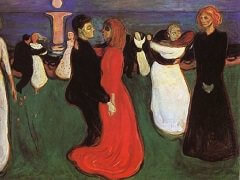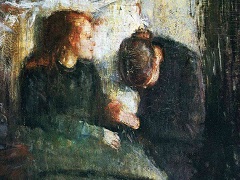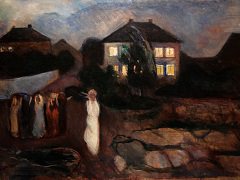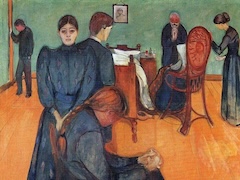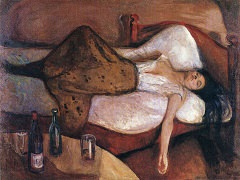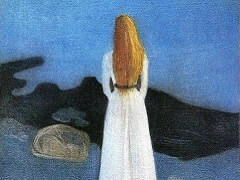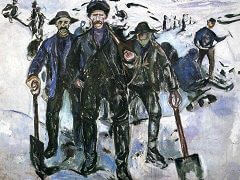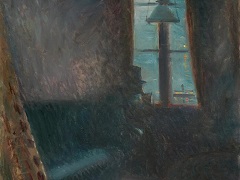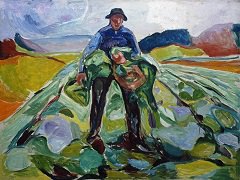Melancholy, 1894 by Edvard Munch

The practice of free love by the bohemians of Christiania, advocated by Jaeger as suited to an anarchist society, led to a good deal of jealousy. Among those who aroused it was Oda Krohg (wife of the painter Christian Krohg), who became, to borrow Tom Lehrer's phraseology, the hypotenuse of a triangle involving her husband and Jappe Nilssen, a young journalist who was a friend of Munch. His jealousy inspired this symbolic composition which Munch painted in several versions under various titles: Jealousy, and Melancholy.
Nilssen sits miserable among the rocks on the shore at Asgardstrand, in the profile position of contemplation. In the distance the figures of a man and a woman, Christian and Oda Krohg, are about to embark on a boat, bound for an island where they will make love. Nilssen is painted in the manner of the Pont-Aven school, in heavy inflexible contours. The further flatten a figure already flattened by the profile silhouette, and do not altogether harmonize with the vague plastic implication of the face and the hand supporting it. The distant view is fused into art nouveau undulations. We are in fact presented with two different image: firstly, an imaginary but objective view of a melancholy man and secondly, a blurred picture of the distant scene his mind's eye conjures up as a metaphor of the cause of his melancholy. Such double images, demanding a transfer from our own eyes to the mid's eye of a foreground figure, are not uncommon in Munch



